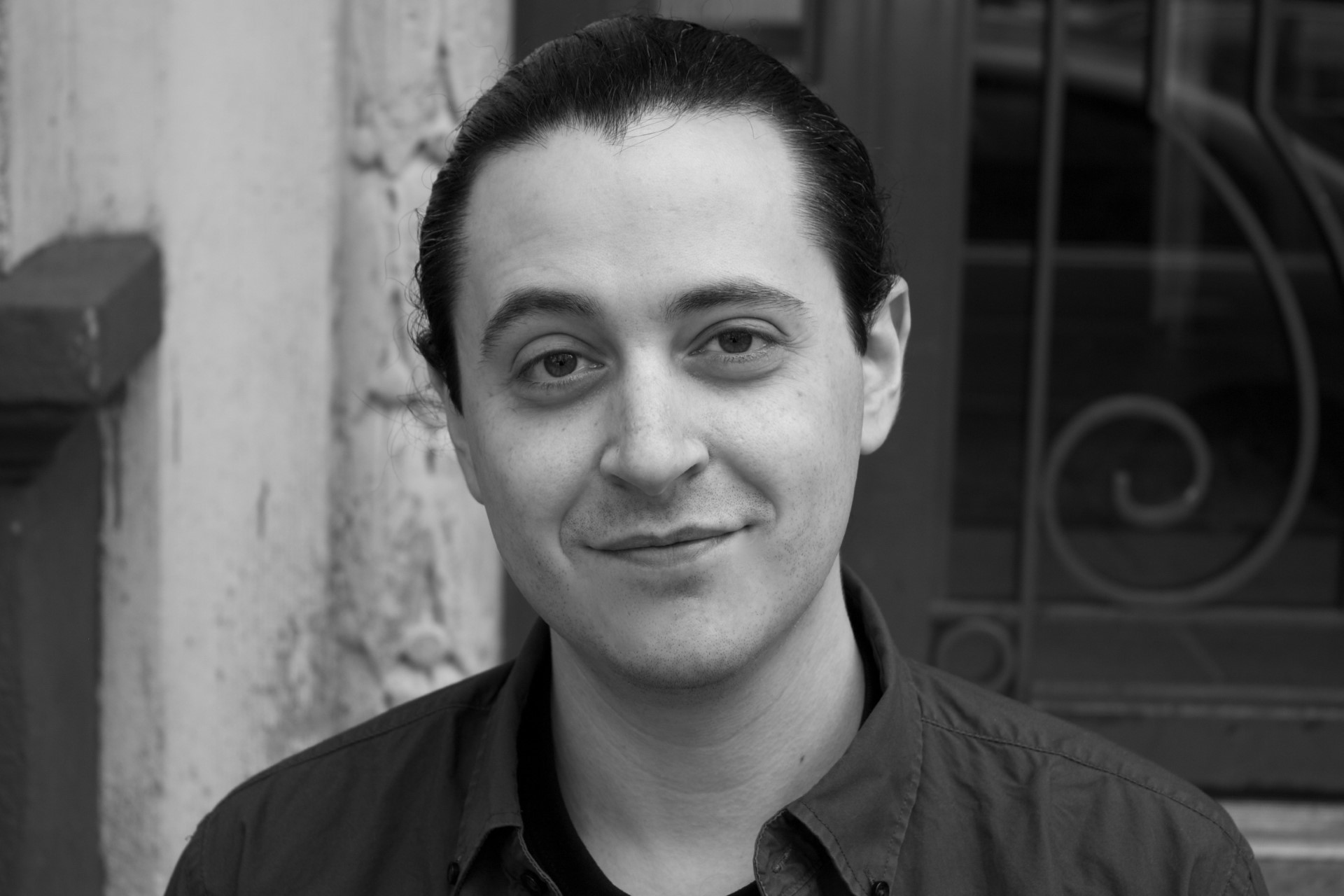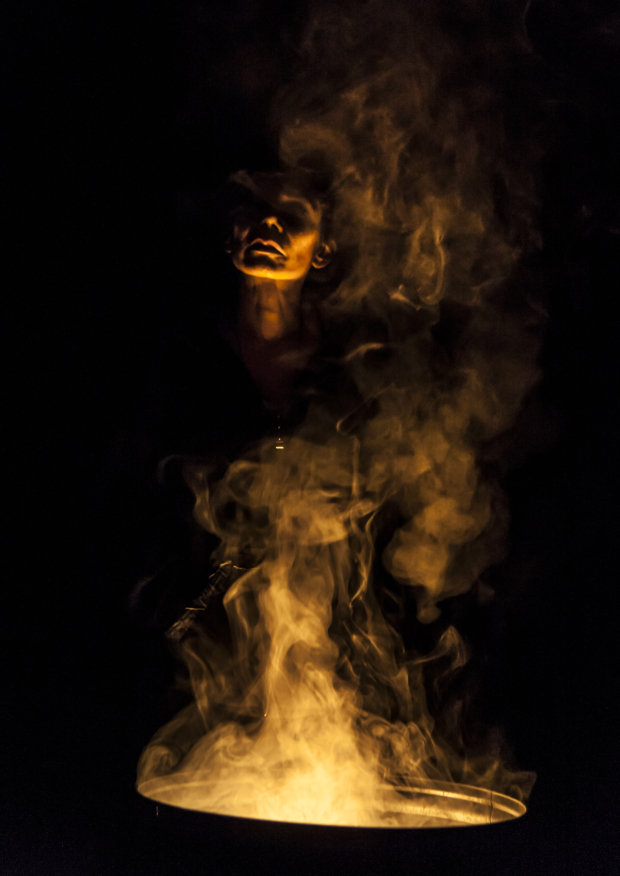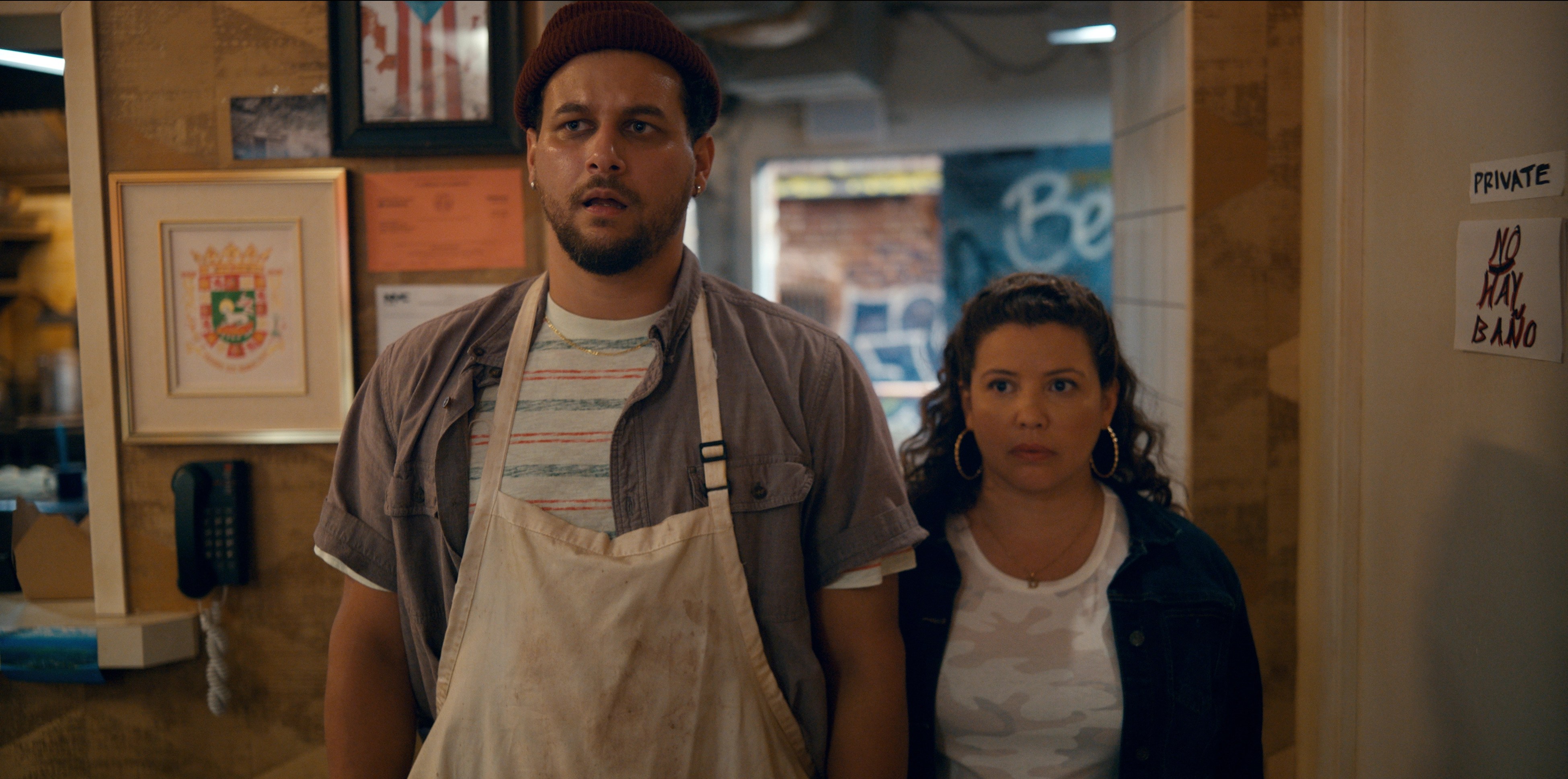Interview: Aaron Mark’s Journey From Empanada Loca to The Horror of Dolores Roach
Mark is the creator of the new Amazon Prime series, based on his solo play of the same title.
The journey of a play to the stage is long; the journey of a play from stage to screen is perhaps even longer. Playwright Aaron Mark learned this first hand when he created Empanada Loca, a Sweeney Todd-inspired solo play that served as a vehicle for actor Daphne Rubin-Vega in 2015. Rubin-Vega played Dolores, an ex-con masseuse who’s forced to flee underground (literally) after her new business arrangement (popping her clients into hand pies) goes awry, and earned Outer Critics Circle and Drama Desk Award nominations.
The world of Dolores was then expanded into a podcast, and after that happened, Mark got the invitation to expand it further for television. The new Amazon Prime seres — titled The Horror of Dolores Roach — debuts today, with Justina Machado inheriting the role of Dolores and Rubin-Vega graduating to a producer and co-writer title. Here, Mark looks back on the evolution of this world, and where it goes from here.

(© Abby Weston-Mark)
Where did you first get the seed of the idea for Empanada Loca, which eventually became The Horror of Dolores Roach?
I’d done a monologue play with the great Tom Hewitt called Another Medea, a contemporary reinvention of the Medea myth, and had been thinking about writing a companion piece for it. At the time, I was living in Washington Heights, where I lived for 10 years, watching the gentrification happen there, which struck me as cannibalistic. That sent me down the Sweeney Todd rabbit hole, through the endless iterations of it that go back to the mid-1800’s, and as a longtime Daphne Rubin-Vega superfan, I fixated on the idea of Daphne as a modern-day Sweeney, not driven by revenge or greed but by survival, in a gentrifying Washington Heights. I mentioned the idea to Jim Nicola at New York Theatre Workshop, and he said, “Well if you write it, I’ll give it to Daphne,” and so I did, and he did, and then Daphne and I developed Empanada Loca around New York together for almost 2 years before LAByrinth Theater Company produced it in 2015.
Shortly after we closed off-Broadway, my now-manager said to me, “This is a TV show,” and so I came out to LA in 2016 and pitched a Dolores TV series based on the play. At the time, people thought I was nuts and nobody would bite (pardon the food pun), but going through that process gave me a clear idea of how the serialized version of Dolores’s story would be structured and expanded. Then, two things happened: Daphne and I went into a studio and made an audio version of the play, and Mimi O’Donnell, who had been artistic director of LAByrinth, moved to Gimlet Media to head up their scripted podcast team. Mimi wanted a horror project, and she knew I was eager to serialize Dolores’s story and that Daphne and I had already been exploring audio, and so everything fell into place. When we made the podcast, I’d let go of the notion of a TV incarnation and just embraced the process of making the very best audio production we possibly could…and then, ironically, a month after the release of the podcast we were in development for TV with Blumhouse.
The play is most definitely darker than the TV series, as is the podcast, in large part because of the presence of the abandoned subway tunnels. In those incarnations, we’re meeting Dolores at a very low point, living underground, and she’s walking us through how the hell this has happened to her — and by extension, how it could also happen to you or me. For TV, knowing we wanted to set the primary story in pre-Covid 2019, we ran with the idea that in the present, four years later, Dolores has become world famous as her story’s been exploited, hence our much more glamorous narrative frame for TV, which also allowed us to open the show up visually. My hope is that we’re able to connect with as wide an audience as possible this season, and once they’ve fallen in love with Dolores, we’ll be able to dig deeper and darker and further embrace the macabre energy that’s always been at the heart of the piece. I am a Grand Guignol devotee myself so I’m looking looking to swim in those waters.

(© Monique Carboni)
I’m so glad to hear that; it’s etched into mine too! When I wrote the play, I’d been a fan of her work as a performer, but one of the things I learned working with her was what an incredible storyteller she is in other ways as well. She was a producer on the podcast and would sit and comb through every word of every episode with me, and so bringing her on as a writer for TV was a no-brainer. Creatively, there’s not another human on the planet I trust more than Daphne, and amidst the inevitable chaos of getting a TV show off the ground, she’s always a source of clarity. She’s the Dolores Whisperer and knows before I do when we’re going off the rails. Before the WGA strike, she and I were having a lot of conversations about what a second season would look like, and I am very much hoping, after the strike, that we’ll be able to dig into that in earnest and write some of it together.
That’s a very fair question, though it’s so difficult for me to answer as when I’ve shared my interpretation of how they’re different with colleagues, I’ve almost always been told, to my surprise, that they’d had the exact opposite interpretation than I did. So I might not be the best judge. They’re very different, as is the way we meet their respective Doloreses (re: tunnels vs. present-day infamy) — but they’re both uniquely extraordinary artists and professionals and humans and it’s a true thrill to work with them both as closely as I’ve been lucky enough to.
Actually, a full Dolores musical is something that keeps coming up! I’d love to do it, though will hopefully be focusing on season two first. I’m also working to bring the solo play back to New York, as it continues to be licensed for productions around the world. Dolores pops up all over the place!

(© Amazon Content Services LLC)









